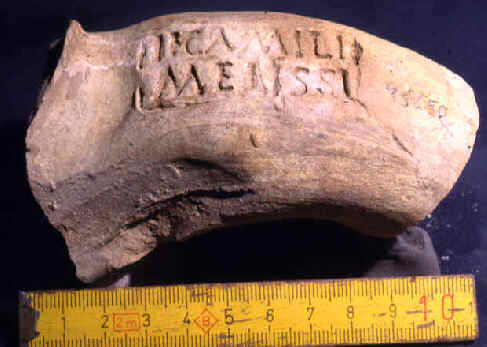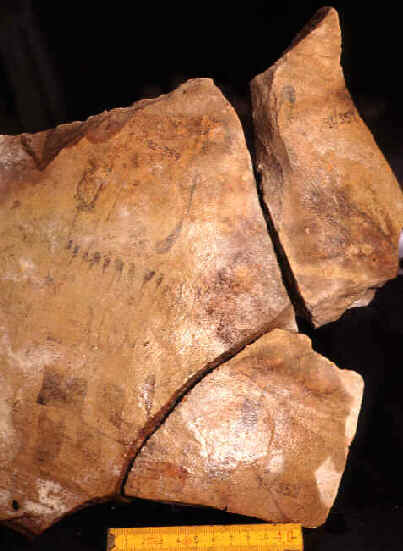 |
MOUNT TESTACCIO: FROM RUBBISH DUMP ARCHIVE |
 |
MOUNT TESTACCIO: FROM RUBBISH DUMP ARCHIVE |
Inscriptions were written on many Roman amphoras, its function was similar to the one made by modern labels.
Thousands of Baetican olive-oil amphoras with written information arrived at the warehouses of Rome. As soon as its content was transferred to smaller containers, the amphoras were thrown in the Testaccio. There they covered with lime to prevent bad scent. Lime preserved most epigraphy until present day.
The epigraphy on Baetican amphoras was done in
two stages: stamps and incised marks (graffiti) before firing; while
painted inscriptions (tituli
picti) were written in black or red
ink at the time amphoras were being filled or afterwards.
Stamps provide information about the owner of the olive-oil, they are identified by tria nomina (abbreviate with three letters generally), but sometimes they refer to the olive-oil producer or the kiln (figlina) where the amphora was made.

Baetican stamp: II(duorum) CAMILI/MELISSI
this stamp is refered
to a family of producers of oil from
the middle of the third century a.C. (it comes from Las
Delicias, a kiln near ancient city of Astigi)
Graffiti ante cocturam are generally characters or numbers. They are supposed to indicate groups of amphoras. Sometimes information seems to be complete and shows the day or year of production and the name of who controlled it.
Painted inscriptions can be found on the neck, on the shoulder and belly they indicate tara, net weight, trader name. The State civil servants were responsible of this amphora control. They regulated that the written information was correct and then, they added in cursive writing, under one of the handles, the place of control, weigh, and name of officeholder.

amphora fragment with is whole
epigraphy. titulus X[...]V
(tara in the neck of the amphora written in roman pounds).
TITULUS FISCI RATIONIS
[PATR]I/MONI STAT PO[...]
(in the back the name of the mercator, here the state) titulus
CCXVI
(the weight written in roman pounds in the belly of the amphora)
Nowadays we know more names of olive-oil producers, traders, places of control, dates and kilns than Dressel knew. Moreover, archaeometric analyses are an innovation, which have allowed us to improve the quality of the studies.
Dressel 20 amphora from the first half of the third century A.C.
with the reconstruction of post-Sever inscriptions coming
from the some examples found in the Testaccio